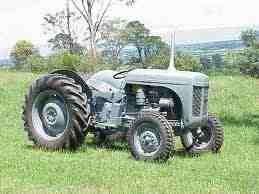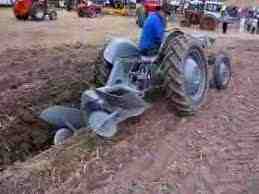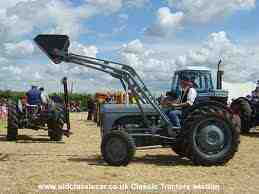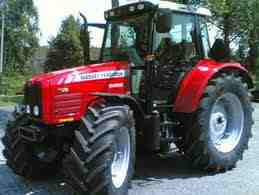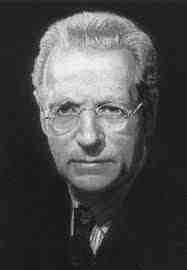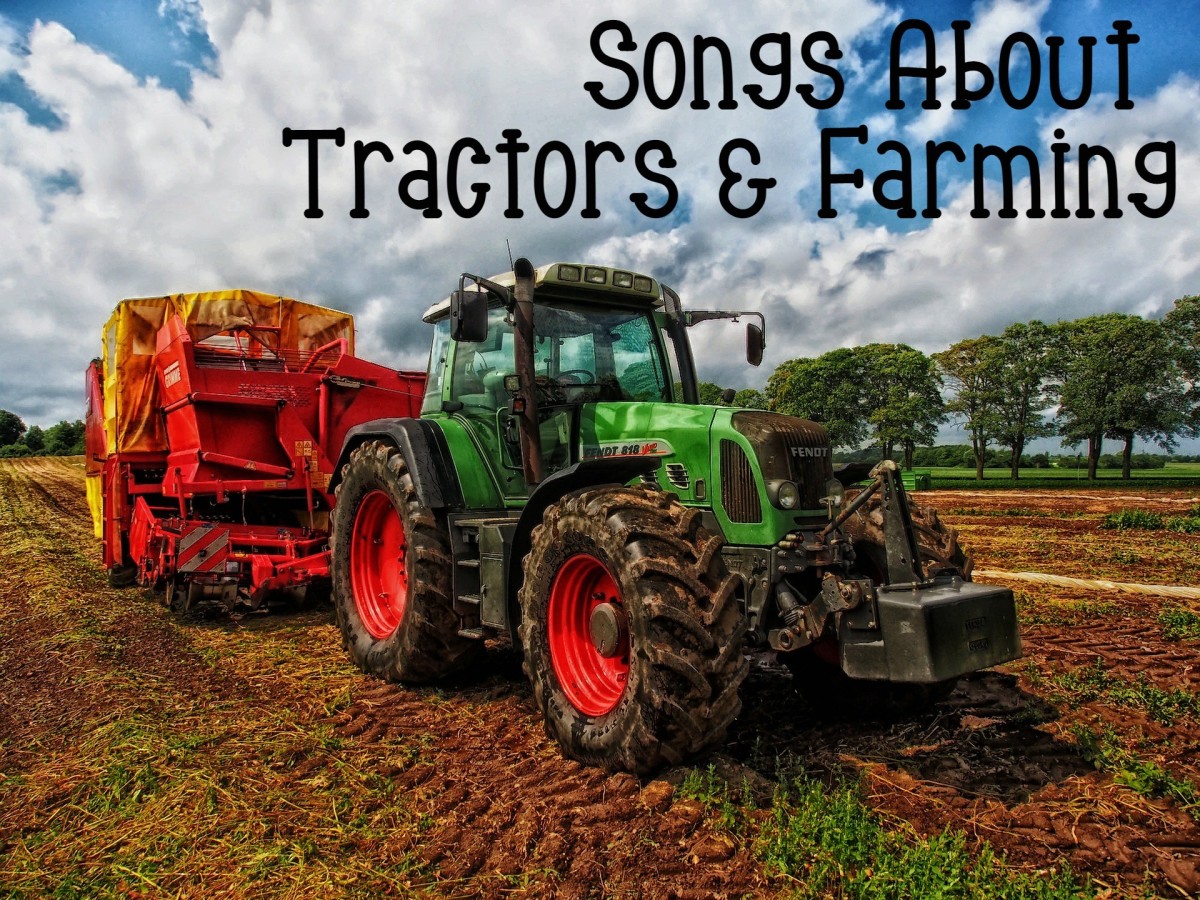The Great Harry Ferguson and the "Fergie" Tractor
The World's Best Loved Tractor
Click thumbnail to view full-size





No Toe-Sucking, Just Great Engineering
.A man who did more for agriculture than any one else of his times.
We hear the name Ferguson a lot these days as Sarah, the F---ess of York, wends her erratic way through life doing - as far as I can see - little discernable good, except perhaps to have promoted toe-sucking as fore-play.
Sarah - and we hear a groan of relief from a country graveyard - is not related to the Ferguson of this article, that is Henry George (Harry) Ferguson, who revolutionized agriculture with his Ferguson System of soil tillage and other work done by tractors a British farms.
When this writer first began a career, the idea was to become a farmer and three years were spent before it was given up in disgust in favor of the Royal Navy (an even bigger mistake). But one thing that has stuck with me through all the intervening years is what a marvel of engineering was the Ferguson Tractor and its special implements, such as the plough.
Before Harry Ferguson attempted to immerse himself in the agricultural engineering business, he had already designed and built a plane; taught himself to fly and was the first aviator to fly from Britain to Ireland. Later, he was studying the tractors of the day as they laboriously pulled heavy, separate ploughs and harrows, etc., through Britain’s heavy, damp soil, when a brilliant idea occurred to him. Like all great ideas, one can’t help thinking, why wasn’t it thought of previously? Why not. Ferguson mused, attach these pieces of equipment to linkage on the tractor and control them with hydraulics from the driver’s seat? Further, and this was the real secret of the immediate success of the system, as the plough, etc., was dragged through the soil, the drag and therefore weight, would be transferred to the rear wheels of the tractor, giving enormous traction and allowing a far lighter, minimally powered tractor, to do the job only possible by expensive, fuel gulping behemoths in the past. In fact, as I can bear witness, it was impossible to spin the rear wheels of a “Fergie,” or “Little Gray Fergie,“ as the tractors were lovingly named, no matter how heavy the going, the machine would stall before it lost traction. (See my note).
Harry developed the tractor for about 20 years after the lightning bolt of pure reason hit him in 1916. The system was patented in 1930 and several models of tractor produced until the famous THE 20 came out and was embraced by farmers and councils all over Britain and eventually, as deals with Henry Ford and other were finalized, was accepted all over the world.
Ferguson called his system “”the Automatic Control System,” and the tractors were built by a David Brown factory in Huddersfield in the days when this country was known for its manufacturing all over the planet.
I drove Fergies at Melon Farm, Ivychurch, Romney Marsh, and at a farm in Gate Helmsley, Yorkshire. (Interestingly, the farmer was a Mr. Ford!). It was true that we loved these efficient and easily handled little tractors - for they were tiny compared to any other popular tractors of the day: the Fordson Majors, the Nuffield Universals and the clumsy Field Marshalls with their one huge cylinder that sounded like an artillery barrage; the Massey Harris, made by the company with which Ferguson would merge in 1953 as Massey-Ferguson, and many others.
The tractors found the same sort of reverence in Australia, Canada and New Zealand. Ford, in the US, built 300,000 of the tractors before falling out with Ferguson and losing the rights to make the machine. (This resulted in angry farmers insisting on thousands being imported from Britain as their special tilling machinery was useless without the tractor…now, that’s a “special relationship,” those were, indeed, the days!).
The first tractors ran on petrol, superseded by petrol/TVO (Tractor Vaporizing Oil), actually petrol/paraffin (kerosene in the USA). Diesel models soon followed.
Ferguson tractors were used for many other applications apart from agriculture. Several with tracks were the first to reach the North Pole since Scott’s ill fated expedition. It was found they could scale a 7 in 1 icy hill, yet only men with crampons attached could ascend this steep incline.
Ferguson became very rich from his company, and his patents for the system he developed on his tiny Fergie tractors has been taken up and used by all tractor manufacturers since.
Ever innovative, Ferguson went on to build the first four-wheel drive F1 racing car.
Harry Ferguson, inventor extraordinary, died in 1960 of barbiturate poisoning at his home in Stow-on-the-Wold. The coroner left an open verdict on whether it was accidental or suicide. His tractors are now eagerly sought by collectors. He left us a huge legacy.
Note.
In fact, if the Ferguson tractor did have a fault, it was that its extraordinary hauling ability outstripped the power from the four cylinder motor (a Standard car engine was used at first). A couple of times, we had to haul a noble Fergie from a swampy field as it just lacked the power to move. Putting large engines in them, of course, would have negated the designer’s mandate, to produce a low-cost and effective machine. We soon learned the few limits of the tiny workhorse and didn’t let it bite off more than we all could chew!

